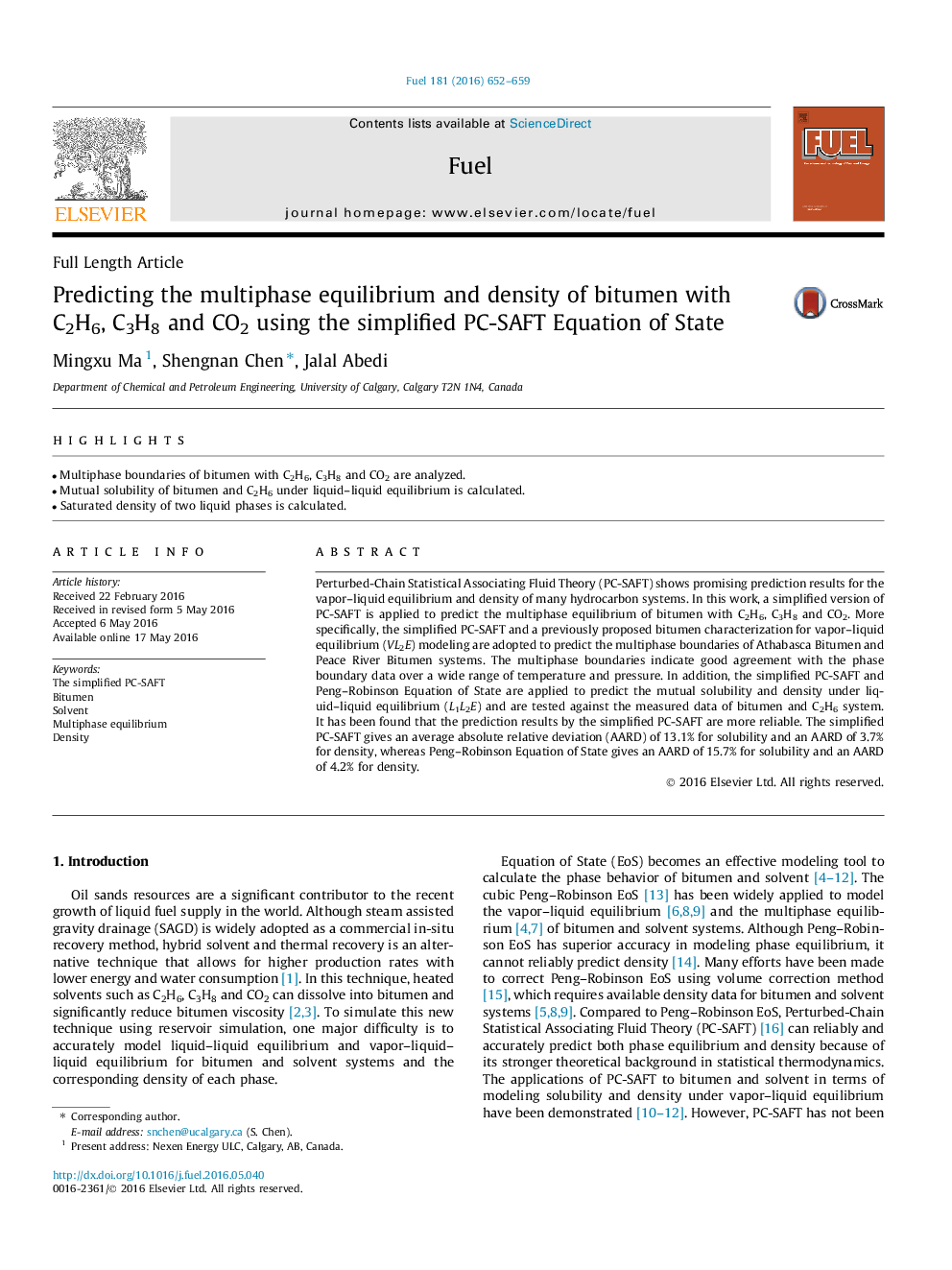| Article ID | Journal | Published Year | Pages | File Type |
|---|---|---|---|---|
| 204952 | Fuel | 2016 | 8 Pages |
•Multiphase boundaries of bitumen with C2H6, C3H8 and CO2 are analyzed.•Mutual solubility of bitumen and C2H6 under liquid–liquid equilibrium is calculated.•Saturated density of two liquid phases is calculated.
Perturbed-Chain Statistical Associating Fluid Theory (PC-SAFT) shows promising prediction results for the vapor–liquid equilibrium and density of many hydrocarbon systems. In this work, a simplified version of PC-SAFT is applied to predict the multiphase equilibrium of bitumen with C2H6, C3H8 and CO2. More specifically, the simplified PC-SAFT and a previously proposed bitumen characterization for vapor–liquid equilibrium (VL2E) modeling are adopted to predict the multiphase boundaries of Athabasca Bitumen and Peace River Bitumen systems. The multiphase boundaries indicate good agreement with the phase boundary data over a wide range of temperature and pressure. In addition, the simplified PC-SAFT and Peng–Robinson Equation of State are applied to predict the mutual solubility and density under liquid–liquid equilibrium (L1L2E) and are tested against the measured data of bitumen and C2H6 system. It has been found that the prediction results by the simplified PC-SAFT are more reliable. The simplified PC-SAFT gives an average absolute relative deviation (AARD) of 13.1% for solubility and an AARD of 3.7% for density, whereas Peng–Robinson Equation of State gives an AARD of 15.7% for solubility and an AARD of 4.2% for density.
